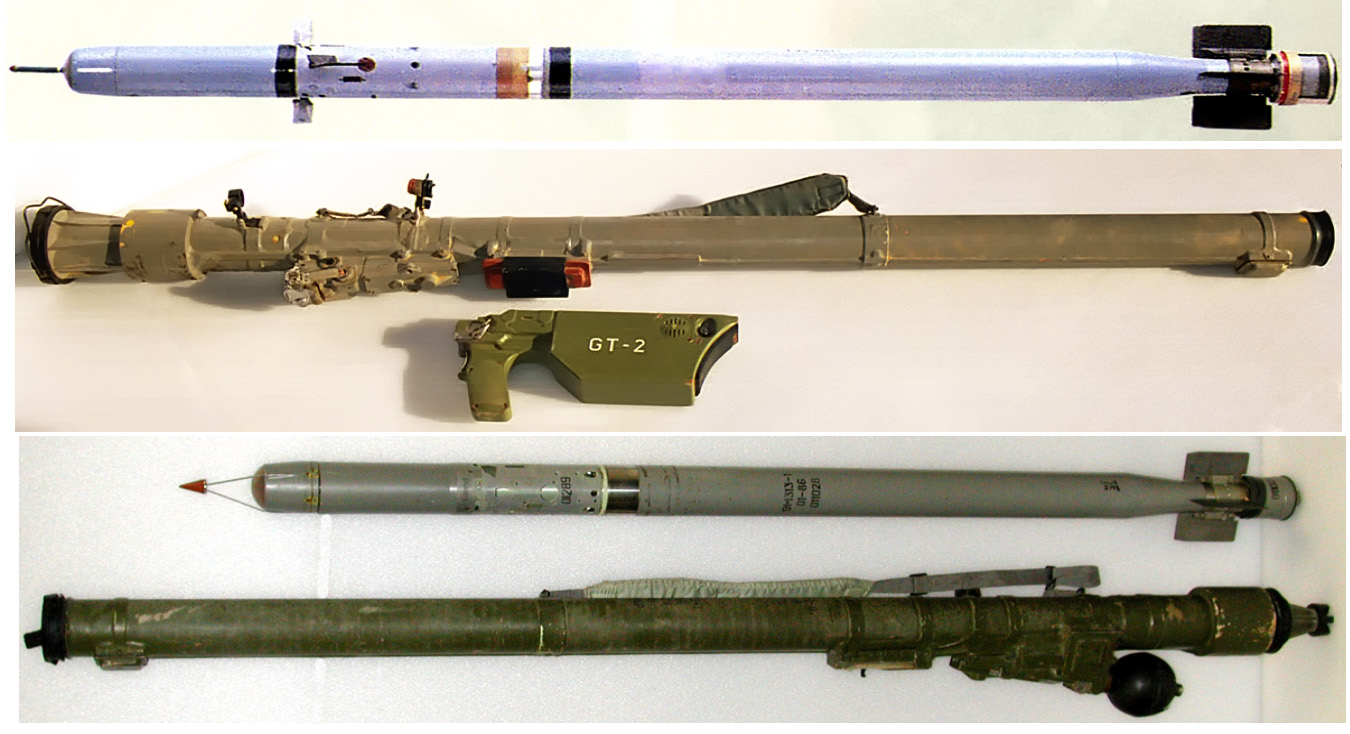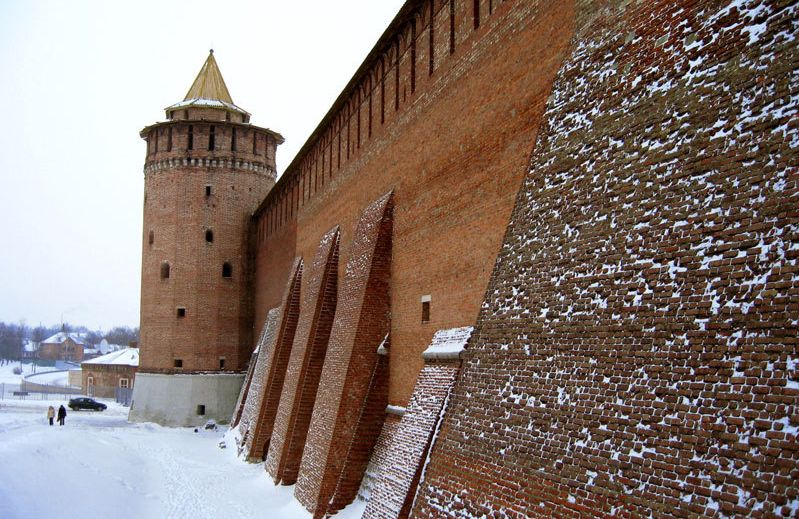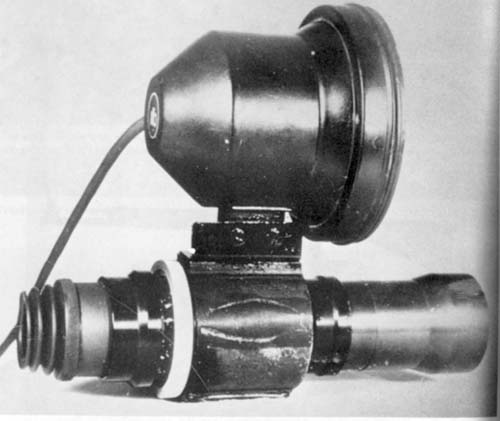|
SA-16 And SA-18 Missiles And Launchers
The 9K38 Igla (russian: Игла́, "needle", NATO reporting name SA-18 Grouse) is a Russian/Soviet man-portable infrared homing surface-to-air missile (SAM) system. A simplified, earlier version is known as the 9K310 Igla-1 (NATO: SA-16 Gimlet), and the latest variant is the 9K338 Igla-S (SA-24 Grinch). The Igla-1 entered service in 1981, the Igla in 1983, and the Igla-S in 2004. The Igla has been supplemented by the 9K333 Verba since 2014.New Russian Verba MANPADS will replace Igla-S - Armyrecognition.com, 15 September 2014 History The development of the Igla short-range man-portable air defense system ( |
Soviet Union
The Soviet Union,. officially the Union of Soviet Socialist Republics. (USSR),. was a transcontinental country that spanned much of Eurasia from 1922 to 1991. A flagship communist state, it was nominally a federal union of fifteen national republics; in practice, both its government and its economy were highly centralized until its final years. It was a one-party state governed by the Communist Party of the Soviet Union, with the city of Moscow serving as its capital as well as that of its largest and most populous republic: the Russian SFSR. Other major cities included Leningrad (Russian SFSR), Kiev (Ukrainian SSR), Minsk ( Byelorussian SSR), Tashkent (Uzbek SSR), Alma-Ata (Kazakh SSR), and Novosibirsk (Russian SFSR). It was the largest country in the world, covering over and spanning eleven time zones. The country's roots lay in the October Revolution of 1917, when the Bolsheviks, under the leadership of Vladimir Lenin, overthrew the Russian Provisional Government ... [...More Info...] [...Related Items...] OR: [Wikipedia] [Google] [Baidu] |
2022 Russian Invasion Of Ukraine
On 24 February 2022, in a major escalation of the Russo-Ukrainian War, which began in 2014. The invasion has resulted in tens of thousands of deaths on both sides. It has caused Europe's largest refugee crisis since World War II. An estimated 8 million Ukrainians were displaced within their country by late May and 7.8 million fled the country by 8 November 2022, while Russia, within five weeks of the invasion, experienced its greatest emigration since the 1917 October Revolution. Following the 2014 Ukrainian Revolution, Russia annexed Crimea, and Russian-backed paramilitaries seized part of the Donbas region of south-eastern Ukraine, which consists of Luhansk and Donetsk oblasts, sparking a regional war. In March 2021, Russia began a large military build-up along its border with Ukraine, eventually amassing up to 190,000 troops and their equipment. Despite the build-up, denials of plans to invade or attack Ukraine were issued by various Russian gove ... [...More Info...] [...Related Items...] OR: [Wikipedia] [Google] [Baidu] |
SA-16 And SA-18 Missiles And Launchers
The 9K38 Igla (russian: Игла́, "needle", NATO reporting name SA-18 Grouse) is a Russian/Soviet man-portable infrared homing surface-to-air missile (SAM) system. A simplified, earlier version is known as the 9K310 Igla-1 (NATO: SA-16 Gimlet), and the latest variant is the 9K338 Igla-S (SA-24 Grinch). The Igla-1 entered service in 1981, the Igla in 1983, and the Igla-S in 2004. The Igla has been supplemented by the 9K333 Verba since 2014.New Russian Verba MANPADS will replace Igla-S - Armyrecognition.com, 15 September 2014 History The development of the Igla short-range man-portable air defense system ( |
SA-14 Gremlin
The 9K34 Strela-3 (russian: 9К34 «Стрела-3», 'arrow', NATO reporting name: SA-14 Gremlin) is a man-portable air defense missile system (MANPADS) developed in the Soviet Union as a response to the poor performance of the earlier 9K32 Strela-2 (SA-7 Grail) system. The missile was largely based on the earlier Strela 2, and thus development proceeded rapidly. The new weapon was accepted into service in the Soviet Army in January 1974. Description The most significant change over the Strela 2 was the introduction of an all-new infra-red homing seeker head. The new seeker worked on FM modulation (con-scan) principle, which is less vulnerable to jamming and decoy flares than the earlier AM (spin-scan) seekers, which were easily fooled by flares and even the most primitive infrared jammers. The new seeker also introduced detector element cooling in the form of a pressurized nitrogen bottle attached to the launcher. The effect of cooling was to expand the seeker's lead sulphi ... [...More Info...] [...Related Items...] OR: [Wikipedia] [Google] [Baidu] |
SA-7 Grail
The 9K32 Strela-2 (russian: Cтрела, "arrow"; NATO reporting name SA-7 Grail) is a light-weight, shoulder-fired, surface-to-air missile (or MANPADS) system. It is designed to target aircraft at low altitudes with passive infrared homing guidance and destroy them with a high explosive warhead. Broadly comparable in performance with the United States Army, US Army FIM-43 Redeye, the Strela-2 was the first Soviet Union, Soviet man-portable SAM – full-scale production began in 1970. While the Redeye and 9K32 Strela-2 were similar, the missiles were not identical. The Strela-2 was a staple of the Cold War and was produced in huge numbers for the Soviet Union and their allies, as well as revolutionary movements. Though since surpassed by more modern systems, the Strela and its variants remain in service in many countries, and have seen widespread use in nearly every regional conflict since 1972. Development The end of World War II led to a major shift in Soviet defence poli ... [...More Info...] [...Related Items...] OR: [Wikipedia] [Google] [Baidu] |
Strela (other)
Strela (russian: Стрела, ''arrow'') may refer to: Russian/Soviet technology Anti-aircraft missiles * 9K31 Strela-1, a.k.a. SA-9 Gaskin * 9K32 Strela-2, a.k.a. SA-7 Grail * 9K34 Strela-3, a.k.a. SA-14 Gremlin * 9K35 Strela-10, a.k.a. SA-13 Gopher Other * Strela (crane), a class of Russian-built cargo cranes used on the ''Mir'' and the International Space Station * Strela (rocket), a Soviet/Russian carrier rocket * Strela (satellite), a Russian communications satellite constellation * Strela computer, the first mainframe computer manufactured serially in the Soviet Union Other uses * Strela (mountain), in the Plessur Alps, Switzerland * Strela (beer) Strela is a beer that is produced by the company CERIS, based in the eastern part of Praia, Cape Verde. The name ''Strela'' is Cape Verdean Creole for "star". Production of the beer was started in November 2006, replacing the production of ''Coral ..., a Cape Verdean beer * Strela candy, a confectionery in the Commonwealt ... [...More Info...] [...Related Items...] OR: [Wikipedia] [Google] [Baidu] |
Kolomna
Kolomna ( rus, Колóмна, p=kɐˈlomnə) is a historical types of inhabited localities in Russia, city in Moscow Oblast, Russia, situated at the confluence of the Moskva River, Moskva and Oka Rivers, (by rail) southeast of Moscow. Population: History Mentioned for the first time in 1177, Kolomna was founded in 1140–1160 according to the latest archaeological surveys. Kolomna's name may originate from the Old East Slavic, Old Russian term for "on the bend (in the river)", especially as the old city is located on a sharp bend in the Moskva River, Moscow River. In 1301, Kolomna became the first town to be incorporated into the Moscow Principality. Like some other ancient Russian cities, it has a Kolomna Kremlin, kremlin, which is a citadel similar to the Moscow Kremlin, more famous one in Moscow and also built of red brick. The stone Kolomna Kremlin was built from 1525–1531 under the Russian Tsar Vasily III. The Kolomna citadel was a part of the Zasechnaya cherta, Great ... [...More Info...] [...Related Items...] OR: [Wikipedia] [Google] [Baidu] |
9K333 Verba
The 9K333 ''Verba'' (russian: Верба, "Willow") is a Russian fourth-generation man-portable infrared homing surface-to-air missile (SAM) MANPADS. "9K333" is the Russian GRAU designation of the system. Its NATO reporting name is SA-25. History The 9K333 ''Verba'' was originally developed as a replacement for the 9K38 Igla The 9K38 Igla (russian: Игла́, "needle", NATO reporting name SA-18 Grouse) is a Russian/Soviet man-portable infrared homing surface-to-air missile (SAM) system. A simplified, earlier version is known as the 9K310 Igla-1 (NATO: SA-16 Gi .... The Verba's primary new feature is its multispectral optical seeker, using three sensors - ultraviolet, near infrared, and mid-infrared - as opposed to the Igla-S' two. Cross-checking sensors against one another better discriminates between relevant targets and decoys, and decreases the chance of disruption from countermeasures, including lasers that attempt to blind missiles. According to a KBM spokesperson, ... [...More Info...] [...Related Items...] OR: [Wikipedia] [Google] [Baidu] |
Surface-to-air Missile
A surface-to-air missile (SAM), also known as a ground-to-air missile (GTAM) or surface-to-air guided weapon (SAGW), is a missile designed to be launched from the ground to destroy aircraft or other missiles. It is one type of anti-aircraft system; in modern armed forces, missiles have replaced most other forms of dedicated anti-aircraft weapons, with anti-aircraft guns pushed into specialized roles. The first attempt at SAM development took place during World War II, but no operational systems were introduced. Further development in the 1940s and 1950s led to operational systems being introduced by most major forces during the second half of the 1950s. Smaller systems, suitable for close-range work, evolved through the 1960s and 1970s, to modern systems that are man-portable. Shipborne systems followed the evolution of land-based models, starting with long-range weapons and steadily evolving toward smaller designs to provide a layered defence. This evolution of design increasin ... [...More Info...] [...Related Items...] OR: [Wikipedia] [Google] [Baidu] |
Infrared Homing
Infrared homing is a passive weapon guidance system which uses the infrared (IR) light emission from a target to track and follow it seamlessly. Missiles which use infrared seeking are often referred to as "heat-seekers" since infrared is radiated strongly by hot bodies. Many objects such as people, vehicle engines and aircraft generate and emit heat and so are especially visible in the infrared wavelengths of light compared to objects in the background. Infrared seekers are passive devices, which, unlike radar, provide no indication that they are tracking a target. That makes them suitable for sneak attacks during visual encounters or over longer ranges when they are used with a forward looking infrared or similar cuing system. Heat-seekers are extremely effective: 90% of all United States air combat losses over the past 25 years have been caused by infrared-homing missiles. They are, however, subject to a number of simple countermeasures, most notably by dropping flares beh ... [...More Info...] [...Related Items...] OR: [Wikipedia] [Google] [Baidu] |
MANPADS
Man-portable air-defense systems (MANPADS or MPADS) are portable surface-to-air missiles. They are guided weapons and are a threat to low-flying aircraft, especially helicopters. Overview MANPADS were developed in the 1950s to provide military ground forces with protection from jet aircraft. They have received a great deal of attention, partly because armed groups have used them against commercial airliners. These missiles, affordable and widely available through a variety of sources, have been used successfully over the past three decades both in military conflicts, as well as by terrorist organizations. Twenty-five countries, including the United Kingdom, the United States, Poland, Sweden, Russia, and Turkey, produce man-portable air defense systems.CRS RL31741 page 1 Possession, export, and trafficking of such weapons is officially tightly controlled, due to the threat they pose to civil aviation, although such efforts have not always been successful. The missiles are about ... [...More Info...] [...Related Items...] OR: [Wikipedia] [Google] [Baidu] |

.jpg)






